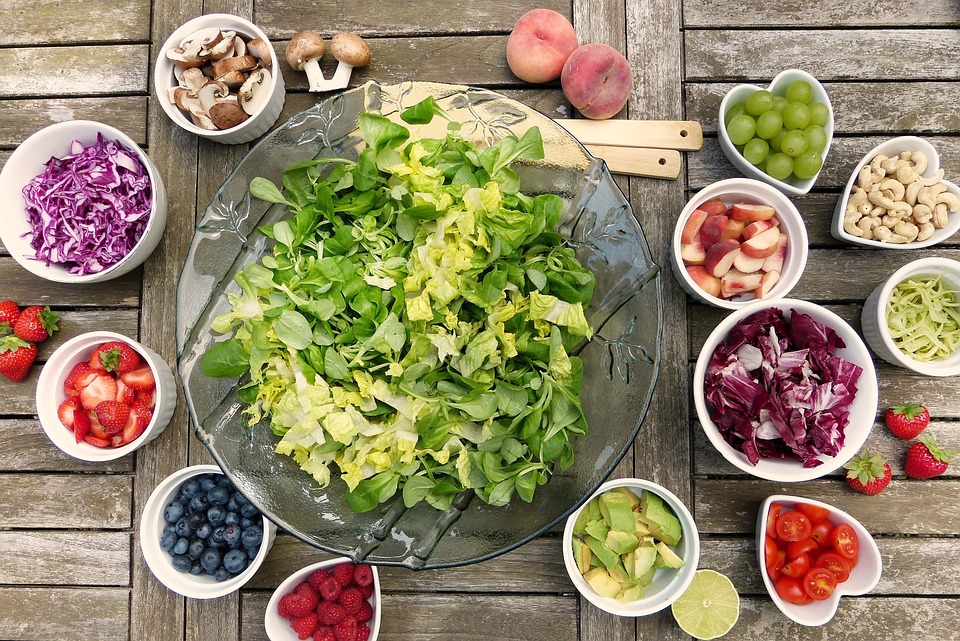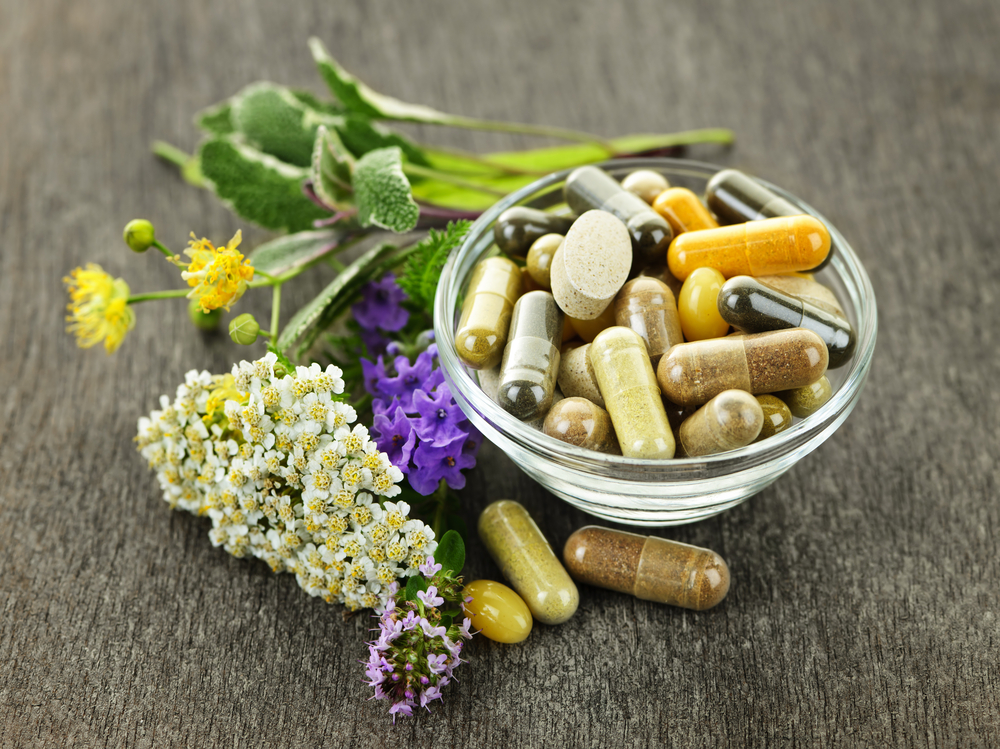When you have type 2 diabetes, practicing healthy lifestyle habits is essential to balancing your blood sugar (glucose) levels and preventing dramatic spikes and falls. Eating well also helps you achieve and maintain a healthy weight, which comes with a reduced risk of experiencing complications from diabetes, including heart disease.
What’s The Best Diet For Diabetes?
Whether you’re trying to prevent or control diabetes, your nutritional needs are virtually the same as everyone else, so no special foods are necessary. But you do need to pay attention to some of your food choices—most notably the carbohydrates you eat. While following a Mediterranean or other heart-healthy diet can help with this, the most important thing you can do is to lose a little weight.
Losing just 5% to 10% of your total weight can help you lower your blood sugar, blood pressure, and cholesterol levels. Losing weight and eating healthier can also have a profound effect on your mood, energy, and sense of wellbeing. People with diabetes have nearly double the risk of heart disease and are at a greater risk of developing mental health disorders such as depression.
But most cases of type 2 diabetes are preventable and some can even be reversed. Even if you’ve already developed diabetes, it’s not too late to make a positive change. By eating healthier, being more physically active, and losing weight, you can reduce your symptoms.
Taking steps to prevent or control diabetes doesn’t mean living in deprivation; it means eating a tasty, balanced diet that will also boost your energy and improve your mood. You don’t have to give up sweets entirely or resign yourself to a lifetime of bland food.
The biggest risk for diabetes: belly fat. Being overweight or obese is the biggest risk factor for type 2 diabetes. However, your risk is higher if you tend to carry your weight around your abdomen as opposed to your hips and thighs.
A lot of belly fat surrounds the abdominal organs and liver and is closely linked to insulin resistance. You are at an increased risk of developing diabetes if you are:
- A woman with a waist circumference of 35 inches or more
- A man with a waist circumference of 40 inches or more
Calories obtained from fructose (found in sugary beverages such as soda, energy and sports drinks, coffee drinks, and processed foods like doughnuts, muffins, cereal, candy and granola bars) are more likely to add weight around your abdomen. Cutting back on sugary foods can mean a slimmer waistline as well as a lower risk of diabetes.
Planning A Diabetes Diet
A diabetic diet doesn’t have to be complicated and you don’t have to give up all your favorite foods. The first step to making smarter choices is to separate the myths from the facts about eating to prevent or control diabetes.
As with any healthy eating program, a diabetic diet is more about your overall dietary pattern rather than obsessing over specific foods. Aim to eat more natural, unprocessed food and less packaged and convenience foods.
Eat more:
- Healthy fats from nuts, olive oil, fish oils, flax seeds, or avocados.
- Fruits and vegetables—ideally fresh, the more colorful the better; whole fruit rather than juices.
- High-fiber cereals and breads made from whole grains.
- Fish and shellfish, organic chicken or turkey.
- High-quality protein such as eggs, beans, low-fat dairy, and unsweetened yogurt.
Eat less:
- Packaged and fast foods, especially those high in sugar, baked goods, sweets, chips, desserts.
- White bread, sugary cereals, refined pastas or rice.
- Processed meat and red meat.
- Low-fat products that have replaced fat with added sugar, such as fat-free yogurt.
Be Smart About Sweets
You don’t have to exclude sugar altogether when following a diet for diabetes, however, it is likely that people tend to take in more sugar than is beneficial. Diabetics can still partake in a little bit of their preferred sweet treat from time to time. The key is moderation.
Decrease your longings for desserts by diminishing the sugar in your diet little by little to permit your taste buds to adapt. If you desire to have dessert, skip the bread (or rice or pasta). Consuming candy during a meal increases the number of carbohydrates you have, so reduce the amount of other carb-containing foods you take in at that time.
Add some healthy fat to your dessert. Fats impede the digestive cycle, which means blood glucose levels increase at a slower rate. Although that is the case, do not grab a doughnut. Include healthy fats in your diet, like peanut butter, ricotta, yogurt, or nuts.
It is better to have candy during a meal rather than just eating it by itself as a snack. If consumed alone, sugary treats will cause your blood sugar levels to dramatically rise. If you incorporate these foods into your meal, coupled with other healthy options, your blood sugar won’t spike quickly.
When you eat dessert, truly savor each bite. Have you ever gone through a whole bag of cookies or devoured a large slice of cake without thinking twice? Can you really say that you enjoyed each bite? Indulge yourself by taking your time to savor the flavors and textures of the food you eat. You’ll have a better time if you partake, plus you’re not as likely to consume too much.
Reduce soft drinks, soda, and juice. For every 12 ounces of a sugary drink you consume each day, your chances of developing diabetes go up approximately 15%. Substitute sparkling water with a spritz of lemon or lime. Reduce the amount of creamers and sweeteners you put in tea and coffee.
Don’t replace saturated fat with sugar. A lot of us switch out saturated fat such as full-fat dairy goods for processed carbs, presuming we’re selecting a more beneficial decision. Reducing the fat content of a food does not necessarily make it good for you if extra sugar has been added as a substitute.
Sweeten foods yourself. Purchase tea with no sugar added, plain yogurt, or oatmeal with no seasonings, and then include a sweetener (or fruit) of your own. You’ll likely add far less sugar than the manufacturer.
Read labels and choose items that have a low amount of sugar, and utilize fresh or frozen ingredients in place of canned items. Pay close attention to the amount of sugar in cereals and sweet drinks.
Steer clear of any processed or pre-packaged foods such as canned soups, frozen dinners, or low-fat food items, as they usually contain covert sugar. Prepare more meals at home.
Decrease the amount of sugar in recipes by a quarter. Adding mint, cinnamon, nutmeg, or vanilla extract can make your food or beverage more sweet instead of using sugar. Find healthy ways to satisfy your sweet tooth.
Instead of ice cream, make a smooth, icy snack with blended frozen bananas. Instead of eating a milk chocolate bar, why not treat yourself to a piece of dark chocolate? Begin your dessert by consuming only half of what you usually would and replace the other half with a piece of fresh fruit.
Be Careful About Alcohol
It’s easy to underestimate the calories and carbs in alcoholic drinks, including beer and wine. And cocktails mixed with soda and juice can be loaded with sugar. Choose calorie-free mixers, drink only with food, and monitor your blood glucose as alcohol can interfere with diabetes medication and insulin.
Being smart about sweets is only part of the battle. Sugar is also hidden in many packaged foods, fast food meals, and grocery store staples such as bread, cereals, canned goods, pasta sauce, margarine, instant mashed potatoes, frozen dinners, low-fat meals, and ketchup. The first step is to spot hidden sugar on food labels, which can take some sleuthing:
- Manufacturers provide the total amount of sugar on their labels but do not have to differentiate between added sugar and sugar that is naturally in the food.
- Added sugars are listed in the ingredients but aren’t always easily recognizable as such. While sugar, honey, or molasses are easy enough to spot, added sugar could also be listed as corn sweetener, high-fructose corn syrup, evaporated cane juice, agave nectar, cane crystals, invert sugar, or any kind of fructose, dextrose, lactose, maltose, or syrup.
- While you’d expect sugary foods to have sugar listed near the top of their list of ingredients, manufacturers often use different types of added sugars which then appear scattered down the list. But all these little doses of different sweeteners can add up to a lot of extra sugar and empty calories!
Fats
It is important to emphasize healthy fat consumption as it is a necessary nutrient for people with diabetes to manage their condition. Some studies indicate that a diet high in unhealthy fats can disrupt your body’s insulin functioning, leading to greater blood sugar levels in the long run.
Focusing on plant-based fats that are not saturated is beneficial for controlling your blood sugar and also has heart health advantages. Examples of food that can be included in a diet are things like nuts, seeds, avocados, olives, and the oil extracted from them.
It is advisable to try to reduce the amount of saturated and trans fats you consume when following a diet for diabetes, as eating too much of these types of fats can have an unwanted effect on your health. Fats that are completely filled with hydrogen atoms are present in pork, red meat, fish, eggs, coconut oil, and palm oil. Trans fats may be present in chilled dough, pastries, biscuits, biscuits, pies, and some spreads that appear like butter.
Vegetables
Vegetables are a great source of fiber, vitamins, and minerals that support overall health and blood sugar management. Vegetables are classified in two main categories: starchy and non-starchy. Starchy vegetables provide a more concentrated amount of natural sugars than non-starchy vegetables and may cause a spike in your blood sugar more than non-starchy options.
This doesn’t mean you can’t have both, as both offer healthy nutrients; it just means mixing them up is a good idea. Some examples of starchy vegetables include potatoes, corn, and butternut squash. Non-starchy vegetables include leafy greens, broccoli, beets, bell peppers, cauliflower, tomatoes, and carrots.
Beans and Legumes
Legumes are a category of plant foods that include beans, peas, and lentils. These are good sources of fiber and healthy carbohydrates that help support blood sugar stability, and they provide nutrients like calcium, potassium, and magnesium.
Diets high in legumes and low in refined grains and added sugars have been shown to help improve blood sugar management. Add legumes to your soups, pasta dishes, salads, grain recipes, burritos, and slow-cooker meals.
Whole Grains
Bread and pasta often receive a reputation as foods to avoid if you have diabetes or struggle with blood sugar control. However, the truth is that not all grains are created equally, and plenty of healthy choices benefit diabetes management.
Research shows that higher consumption of total whole grains can help reduce the risk of developing type 2 diabetes and improve blood sugar control.
The two main grain categories include whole and refined, which refers to the degree of processing they’ve undergone. Understanding which grains fall into each category can help you make healthier choices.
Nuts and Seeds
Consuming nuts and seeds can be beneficial since they contain high amounts of fiber, beneficial fats, proteins, vitamins, and minerals. They are not only nutritious, but they are also efficient in preventing sharp rises in blood sugar levels, and they will help keep you satisfied between meals.
Selecting raw, unsalted nuts and seeds without added sugar is beneficial for people with diabetes. This refers to nuts and seeds consumed either whole or blended into butter.
Options for snacking on healthy nuts or seeds include cashews, almonds, walnuts, pistachios, peanuts, sunflower seeds, pumpkin seeds, chia seeds, flax seeds, and hemp seeds. If you are diabetic, it is advisable to abstain from consuming nuts and seeds that have an excessive amount of sugar or salt added to them.
Meats, Fish, and Protein
Protein is an important part of a type 2 diabetes diet as it helps promote satiety (fullness) between meals. Incorporating high-quality sources of protein along with healthy carbs and fats is a good approach to blood sugar management.
Some of the best protein sources for diabetes management include lean poultry (chicken or turkey) and fish and plant sources like beans, lentils, tofu, seitan, and tempeh.
Avoid proteins that are part of an ultra-processed or fast food item, as these are packaged in unhealthy fats, refined grains, added sugar, and salt; for instance, fast food burgers, hot dogs, and fried fish sticks.
Summary
The best diet for managing type 2 diabetes incorporates a wide variety of healthy whole foods. Avoiding foods high in sodium, saturated and trans fats, and added sugar while focusing on good sources of fiber, unsaturated fats, healthy carbs, vitamins, and minerals is a beneficial approach for maintaining healthy blood sugar levels.
When you have type 2 diabetes, considering any necessary changes to your diet can feel overwhelming. If you don’t know where to start, choose one or two areas to start making small changes or reach out to a registered dietitian for guidance. With consistency, eating well can help improve your blood sugar management, which can help you feel better and have an improved quality of life.









